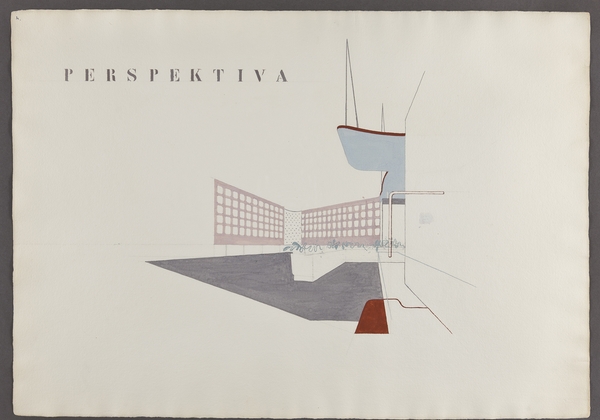T
he main objective of the project Bauhaus – Networking Ideas and Practice is to thoroughly explore and present the activities and interrelations of artists from south-eastern Europe who were schooled at the renowned international school Bauhaus and originated from Croatia: Otti Berger, arch. Gustav Bohutinsky, Ivana Tomljenović Meller, and the region: August Černigoj from Slovenia and arch. Selman Selmanagić from Bosnia and Herzegovina. The project researches Bauhaus’ influences on visual arts, architecture, and design in the period after WW2, focusing on EXAT 51 group from Zagreb, the work of Bauhaus’ student arch. Hubert Hoffmann in Graz, and the architectural practice of the so-called “B-Course” in design at the University of Ljubljana's Department of Architecture.
The oeuvres of artists that will be included in the project have partly been researched before, but the impact of their artistic and educational practices on the art tendencies and scene in the south-eastern European region of the 1950s have not yet been explored and presented comprehensively.
Therefore, this part of the project, aimed at mapping the conceptual influences of Bauhaus on neo-avant-garde movements, is of particular importance. In this respect, one of the research aspects will be to explore the activity of EXAT 51 (experimental atelier), an art group formed in Zagreb in 1951, whose activity had a significant impact on the art scene in former Yugoslav countries. Its founders were young architects, artists, and designers, among whom Ivan Picelj, Vjenceslav Richter, Aleksandar Srnec, Vlado Kristl, Božidar Rašica, Bernardo Bernardi, and Zvonimir Radić will be especially singled out regarding the Bauhaus context. Within this movement, EXAT 51 promoted active art, marked by taking political chances and creating novel expressions.

Artist: Ivan Picelj, Vjenceslav Richter, Aleksandar Srnec
Title: Projekt jug...
From today’s perspective, it is clear that the artistic and pedagogical models applied by the students and teachers at Bauhaus had a very strong influence not only on art, the teaching methods, and everyday life through design and architecture, but also on various social processes. In that sense, along with the art practice, the activity of Smer B (B-Course) at the University of Ljubljana's Department of Architecture will be researched, as well as the program conducted by Hubert Hoffman at the Technical University in Graz and various examples of similar practices in Belgrade, Budapest, and other urban centres of the region as a direct reflection of the Bauhaus legacy.
With regard to its aims, BAUNET will be developed through several interconnected and complementary activities:
- the first phase of the project will be directed at researching the artistic oeuvres and archival material related to Bauhaus students coming from south-eastern Europe, as well as those artistic and pedagogical practices in the 1950s which developed owing to direct or indirect Bauhaus influences. This investigation will be accompanied by workshops, seminars, and lectures in museums and various other scholarly and educational institutions;
- in its second phase, the project will aim at digitalizing the artistic and archive materials that are the object of BAUNET’s research, subsequently developing a database and tools that will enable the users to access the digitalized material online. The database will be accessible through a web-portal targeted at long-term preservation, protection, study, and presentation of valuable cultural heritage as a constituent part of European history;
- the third phase of the project will focus on interpreting and presenting the research by means of an online database, problem-oriented exhibitions, professional publications, and thematic presentations. Exhibitions with various authorial concepts will be held in the partner countries during 2015. Using the principles of contemporary museum practice in interpreting cultural heritage, they will highlight specific segments of the project, as well as its results and aims. The exhibitions will be accompanied by educational activities in the form of workshops, lectures, and other complementary events, tailored to a public composed of different age and interest groups.
Recent social and political changes, which have thoroughly reshaped the map of the European continent, indicate that collaboration and innovation in theory and practice, which were the key postulates of Bauhaus’ activity, are of equal importance for our present and our past. Therefore, the BAUNET project should also be understood outside of the narrow limits of art history, as a positive example of multicultural creative practice.